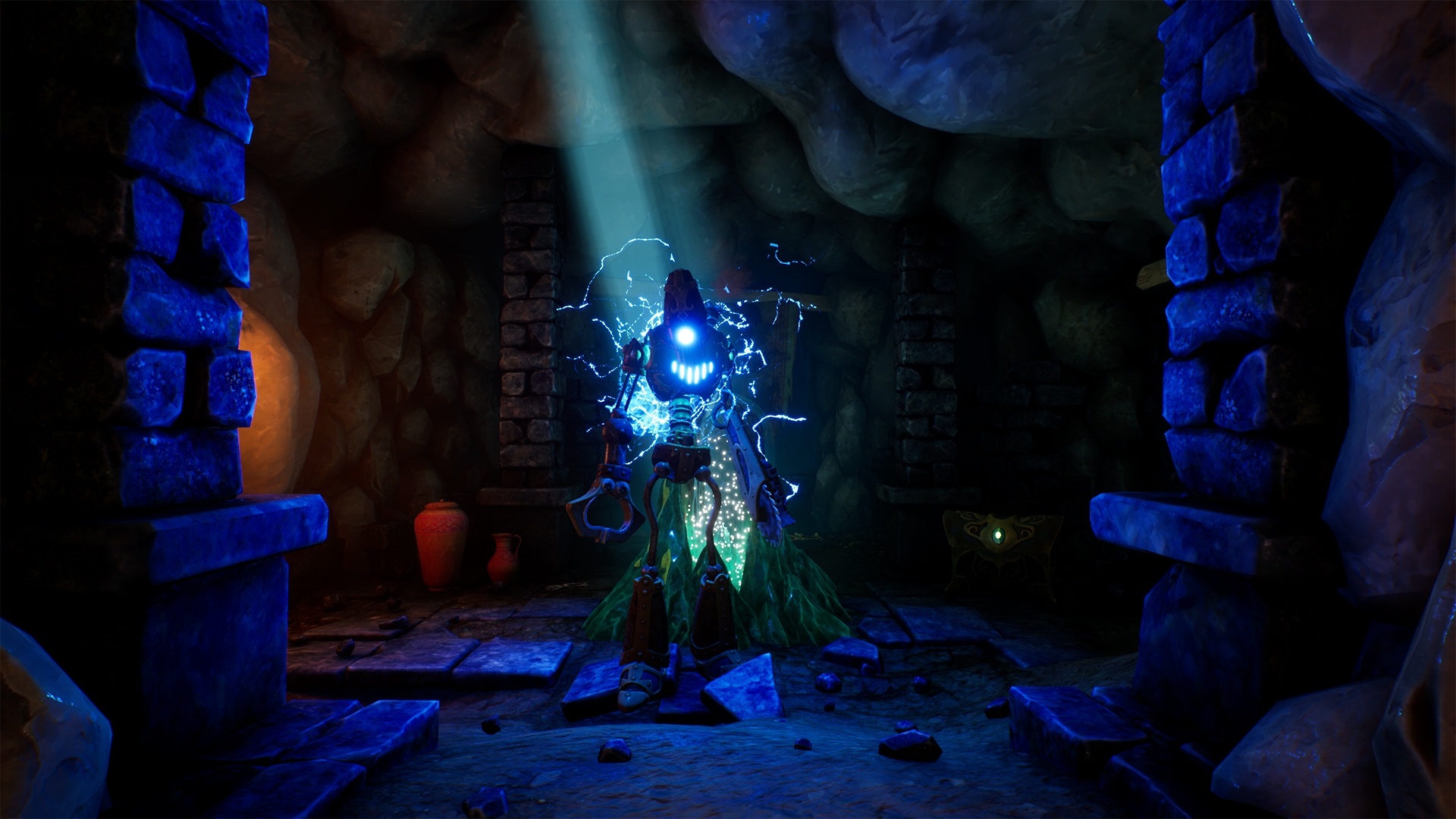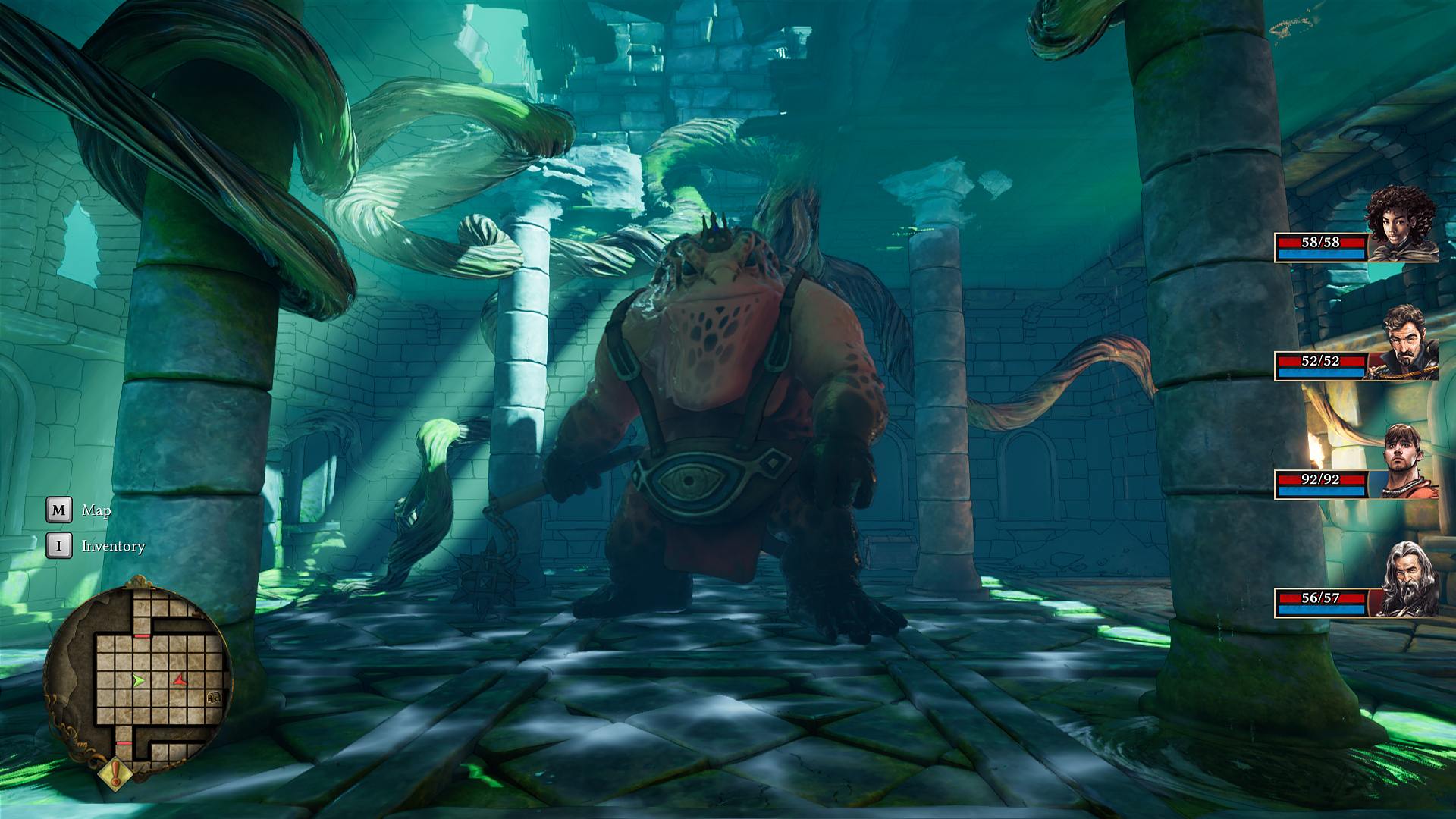Check out this guest article by Chris Baker, Writer & Creative Director of Operencia: The Stolen SunComputer roleplaying games (or CRPGs) have a long and storied history, which is both a blessing and a challenge for modern RPG designers. On one hand, we have decades of innovative games to draw inspiration from, but on the other hand, the legacies of the legendary titles in this space shape player expectations in big ways.When you design an RPG, you can stand on the shoulders of giants, or those same giants can trample you. With that in mind, our team at Zen Studios starts our design process by taking a deep look at the RPGs we grew up playing. Part of this is passion. These are games we love, after all, but we also seek to more deeply understand the design choices that made these games legendary.
Then, those insights turn into starting points for our own inspiration.
To pay tribute to the RPGs that inspired us, we invited veteran CRPG writer, Patrick Holleman, to articulate the design choices that made classic games like
The Bard’s Tale and
Eye of the Beholder iconic. It is our hope that this RPG retrospective series inspires new players to try these games and that it brings a fresh appreciation from longtime fans.
Episode 1: The Power of Limitations in The Bard’s Tale
Early computers didn’t have the processing power to capture the sprawling, open worlds that we explored in our tabletop Dungeons & Dragons adventures, so designers had to be very deliberate about what parts of the experience captured their focus. In practice, the limitations of PC hardware quickly turned into catalysts for innovation.
Episode 2: Injecting Action into RPGs with Eye of the Beholder and Dragon Slayer II
As CRPGs began to mature, early designers experimented with various approaches to capturing the action of the combat that we saw in our minds. Even today, we see designers taking very different approaches when bringing RPGs to life in new, vivid ways, and we can see the earliest forms of these modern ideas in classic games.
Episode 3: RPG Immersion in Ultima Underworld and Final Fantasy VII
“Immersion” can be a problematic term in game design because several factors contribute to the abstract feeling of immersion, but as RPGs become more graphically complex and start to venture into virtual reality, we can look back at early RPGs to better understand what factors and technologies bring a world to life. As a side note, we recognize that Final Fantasy VII may not be a CRPG in the purest definition of the genre, but its impact was significant.
The Zen Studios Philosophy and the Influences Behind Operencia: The Stolen Sun
At Zen Studios, we have a pretty straightforward approach to creating video games - we make what we want to play. And that’s exactly how Operencia: The Stolen Sun came to be.
Before
Operencia: The Stolen Sun was greenlit, our developers were dismayed that first-person dungeon crawlers - the RPGs we cut our teeth on like
the Wizardry series,
The Bard’s Tale and
Eye of the Beholder - were so few and far between in modern gaming. So we decided to change that ourselves.
 Operencia: The Stolen Sun
Operencia: The Stolen Sun is our own version of the classic “blobber,” with modernized sensibilities that are friendlier to those who have never delved into this niche subgenre. So you’re not just getting mazes that pretty much look the same every level; you’re getting a full variety of beautiful Unreal 4-enhanced settings, from classic tombs and castles to fantastical outdoor environments. Your party isn’t composed of nameless faces either -- they’re real characters with personalities and fleshed-out backstories, all brought to life through quality voice-acting for more than 30 characters. And it’s all inspired by the Central European myths, legends, and histories many in our Budapest-based studio grew up with.

For us,
Operencia: The Stolen Sun is a game straight out of the mid-’80s that still feels like a product of 2020. But for players to feel the same way, we knew we needed to reflect deeply on what made classic CRPGs so memorable.
We hope that you enjoyed our docuseries and this brief look inside our design process. We plan to share more videos with our fellow RPG fans, and we’re looking forward to hearing how this look back through RPG history might change how players think about the games of today.  Operencia: The Stolen Sun is our own version of the classic “blobber,” with modernized sensibilities that are friendlier to those who have never delved into this niche subgenre. So you’re not just getting mazes that pretty much look the same every level; you’re getting a full variety of beautiful Unreal 4-enhanced settings, from classic tombs and castles to fantastical outdoor environments. Your party isn’t composed of nameless faces either -- they’re real characters with personalities and fleshed-out backstories, all brought to life through quality voice-acting for more than 30 characters. And it’s all inspired by the Central European myths, legends, and histories many in our Budapest-based studio grew up with.
Operencia: The Stolen Sun is our own version of the classic “blobber,” with modernized sensibilities that are friendlier to those who have never delved into this niche subgenre. So you’re not just getting mazes that pretty much look the same every level; you’re getting a full variety of beautiful Unreal 4-enhanced settings, from classic tombs and castles to fantastical outdoor environments. Your party isn’t composed of nameless faces either -- they’re real characters with personalities and fleshed-out backstories, all brought to life through quality voice-acting for more than 30 characters. And it’s all inspired by the Central European myths, legends, and histories many in our Budapest-based studio grew up with. For us, Operencia: The Stolen Sun is a game straight out of the mid-’80s that still feels like a product of 2020. But for players to feel the same way, we knew we needed to reflect deeply on what made classic CRPGs so memorable.We hope that you enjoyed our docuseries and this brief look inside our design process. We plan to share more videos with our fellow RPG fans, and we’re looking forward to hearing how this look back through RPG history might change how players think about the games of today.
For us, Operencia: The Stolen Sun is a game straight out of the mid-’80s that still feels like a product of 2020. But for players to feel the same way, we knew we needed to reflect deeply on what made classic CRPGs so memorable.We hope that you enjoyed our docuseries and this brief look inside our design process. We plan to share more videos with our fellow RPG fans, and we’re looking forward to hearing how this look back through RPG history might change how players think about the games of today.